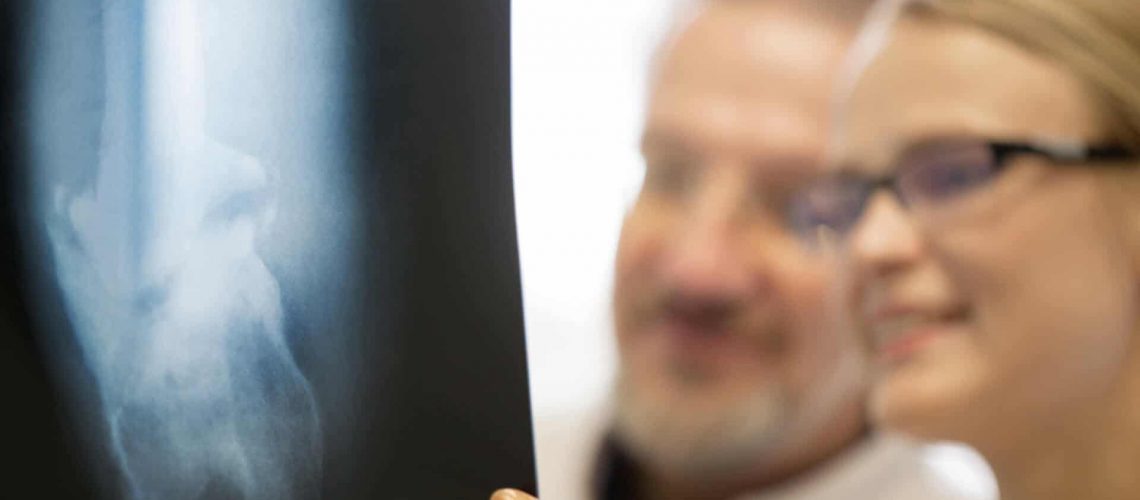Remember the old game — Head, Shoulders, Knees, and Toes — where you would touch each part with your hands? Playing the game gets more and more difficult with sports injuries and age. Our shoulders ache, our knees pop and crackle, and our ankles feel like they’re not supporting our body like they used to.
Whether you’ve injured a joint or have pain as you get older, you may need joint replacement to keep you going. Joint replacement surgery is often the best option when other forms of pain management are unsuccessful.
There are two types of joint replacement: partial and full. In the case that you do need joint replacement, your orthopedic surgeon will determine which surgery best fits your needs and lifestyle.
Contents
Partial Joint Replacement
If some tissues are still in good shape, your surgeon may choose a partial joint replacement. This entails replacing only the damaged parts of a joint, leaving you with more of your natural bone and tissues intact. A partial joint replacement is less invasive and has a faster recovery time, getting you back to your normal activities sooner.
Total Joint Replacement
When a joint has more than one damaged area, a total joint replacement is often the best option. It removes all or part of a damaged joint and replaces it with implants, improving mobility and providing significant pain relief. If you have persistent pain or limited mobility, a total joint replacement is likely the best option for you.
Shoulder Replacement
Partial Replacement
A partial shoulder joint replacement entails removing the upper arm’s damaged part without changing or replacing the “socket” of the joint. The damaged part of the upper arm is replaced with a metal implant to fit into the socket, relieving pain and limited mobility.
Recovery from a partial shoulder entails your arm being immobilized for six weeks while the shoulder heals. Once you’re able to remove the sling, you can begin physical therapy to return to normal function and activities.
Full Replacement
A full shoulder joint replacement surgery is called a Reverse Shoulder Replacement. During this surgery, the ball and socket are switched over and replaced with artificial parts. An artificial ball is attached to the shoulder blade, and a socket is created at the top of the upper arm bone. This method allows the shoulder to bypass the damaged muscles and tissues, stabilizing the joint and providing pain-free motion and function.
Recovering from a full shoulder joint replacement takes a bit longer than a partial replacement. For the first two to four weeks, the arm is immobilized with a sling. Within a month, you’ll experience less than full but will have physical therapy to help you return to normal. It takes about six months before you can perform any rigorous activity such as heavy lifting, running, or swimming.
Knee Replacement
Partial Replacement
During a partial knee replacement, the knee is divided into three parts. If only one part is damaged, then a partial knee replacement can be done. The damaged tissue is removed, existing areas are resurfaced, and an artificial part of the joint is implanted.
Recovery from a partial knee replacement is generally about six to eight weeks. With weekly physical therapy and home exercise, you should be able to return to regular activity quickly.
Full Replacement
For a full knee replacement, damage exists in all three parts of the knee are damaged. Medical-grade plastics and metals are used to replace the joint and are designed to restore joint mobility and use.
Recovery from a full knee replacement is usually about 12 weeks. During this time, you will complete physical therapy from day one, moving towards full mobility and returning to your regular activities.
Hip Replacement
Partial Replacement
A partial hip replacement is only for replacing the ball of the joint (femoral head). It is used when the hip socket is healthy and typically suitable for a broken hip or degenerated ball of the joint. Damaged muscles and tissues are replaced with medical-grade plastic and metal to create a new ball for the joint, and after recovery, you can return to your normal activity levels.
Recovering from a partial hip replacement takes about four months. You begin physical therapy the day after surgery, and it continues every week until you’re back up to normal activity levels.
Full Replacement
When you get a full hip replacement, it entails replacing both the ball and the socket. The surgeon repairs damaged areas of the top of the femur (upper part of the thigh bone) and create a socket with metal or plastic. It is lined to create a smooth surface allowing the new ball of the joint to move smoothly.
Recovery for a full hip replacement begins within 24 hours of surgery by walking for short periods to keep blood flow, and pain managed. Full mobility and use can take three months to a year to achieve, but you can gradually increase your activities over time with physical therapy.
Finding the Right Orthopedic Surgeon
At Thunder Basin Orthopaedics and Sports Medicine, our surgeons are well-experienced and specialize in treating various orthopedic injuries, including sports injuries. Our trained staff and experienced surgeons offer the best possible treatment and utmost care to each individual.
You may need a joint replacement for a number of reasons such as osteoarthritis, rheumatoid arthritis, post-traumatic arthritis, or even a sports injury. These conditions lead to considerable pain, as well as a limited range of motion. At Thunder Basin Orthopaedics, we will work with you to evaluate whether you are a good candidate for a joint replacement by looking at your medical history as well as performing a physical exam and taking x-rays.
If you are ready to take the first steps towards pain-free joints, please request an appointment with us today.


